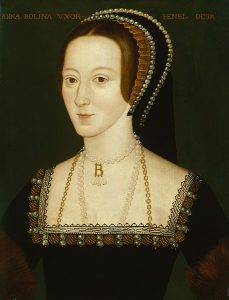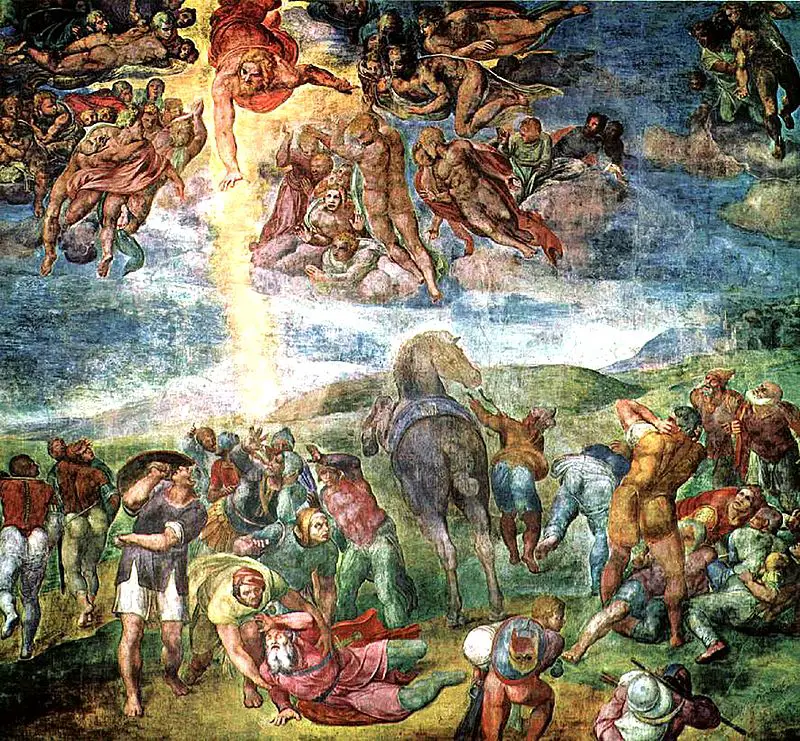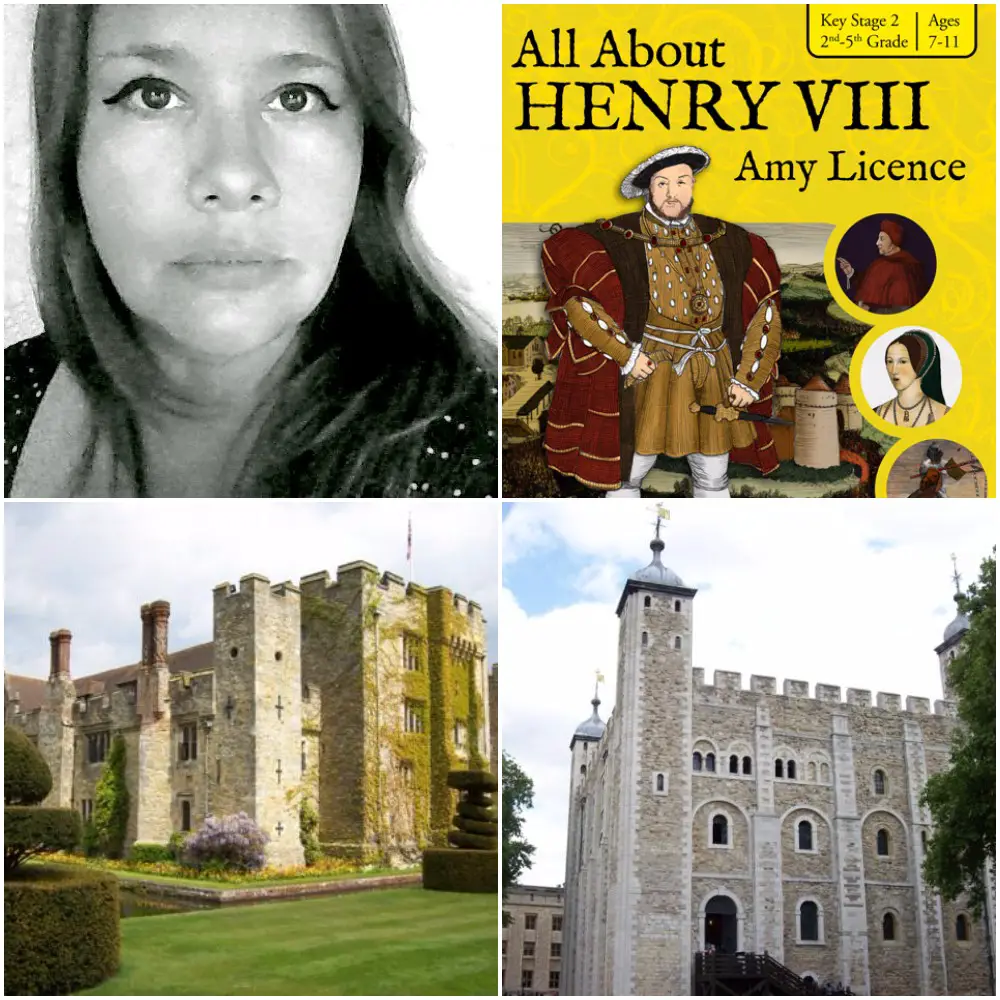 Thank you to regular contributor Heather R. Darsie for this article on the famine of 1527 and how the common people may have seen it.
Thank you to regular contributor Heather R. Darsie for this article on the famine of 1527 and how the common people may have seen it.
In the Tudor period, life was very much governed by the church, and people in England generally, at least outwardly, were religious and God-fearing. Witchcraft was thought to exist, and God could express his pleasure or displeasure, or otherwise send signs through any number of mediums. Did God try to warn Henry VIII, or even Anne Boleyn, that their courtship was ultimately doomed? By 1527, it was no secret that Henry VIII harboured an affection for Anne Boleyn. In May of that year, Henry was explaining to Cardinal Wolsey why he felt he was living in sin by having married his deceased brother’s wife. Cardinal Wolsey had been made legatus a legere, putting him in the position of the most powerful religious figure in England. Henry relied on a passage from the Christian bible, namely Leviticus 20:21, which states, “And if a man shall take his brother's wife, it is an unclean thing: he hath uncovered his brother's nakedness; they shall be childless.” Henry, of course, had his daughter Mary with Catherine, but no male heir and several stillbirths or infants who only lived for a few weeks. But this was not enough to ensure the Tudor dynasty.
Henry’s infatuation with Anne became quietly public in 1526. During the Shrovetide Joust in 1526, Henry wore an emblem of an enflamed man’s heart in a press, with the words, “Declare je nos,” or “Declare I dare not.” This was an open display that Henry had a new love, and it is widely presumed that the new love was Anne. As mentioned above, Henry’s desire for Anne picked up considerable momentum by the spring of 1527. By June, Henry chose to tell his wife Catherine that he was pursuing an annulment of their marriage. The impending food shortages around the country were not yet apparent, even if Henry’s alarming behaviour was.
The summer continued with Henry and Anne wooing each other, such that they pledged to marry one another. In August of 1527, Henry applied to the Pope for a dispensation, allowing him to marry a woman with whom he knew through the first degree of affinity. This was thought to be Anne because it is widely suspected that Henry had carried on a sexual relationship with Anne’s sister Mary at some point.
In the meantime, Mother Nature began wreaking havoc on England by dumping rain most days beginning in April of 1527, when Henry first began seriously looking into annulling his marriage. It finally ended in early June 1527. These weather irregularities set the stage for a blight upon England come harvest time in 1527, with some areas having less than thirty percent of the harvest yield needed to bring the parish, town, etc., successfully through the winter. The overly wet weather pattern continued on into 1528.
Bearing in mind that this article is more for discussion, let us bring the parallels together and pull in a couple of other intriguing cultural shifts happening by or in 1527. The religious reform had started some years before with that upstart Martin Luther over in Germany. By 1527, Lutheranism and the Reformist movement, generally, were in full swing. Anne Boleyn was a keen Reformist, a movement which, of course, challenged the Pope's authority and some of the doctrines put forward by Rome. Henry’s actions in 1527, encouraged by his passion for his new love, were pushing the boundaries of his public devotion to the Pope. With Henry and Anne’s relationship becoming so public in 1527 and the weather turning sour right around the same time, it is certainly interesting to ponder just how the people of England interpreted the actions of their king, and whether God was expressing his extreme displeasure at the thought of Anne becoming Queen of England. The sweating sickness returned, along with more rain, in 1528.
What are your thoughts? Might these events, when looked at in the context of the Tudor period, have looked quite ominous?
Heather R. Darsie lives in the United States with her family and three parrots. She works in the legal field, with a focus on children. She obtained a Bachelor of Arts degree in German Languages and Literature, then a Juris Doctorate in American jurisprudence, and studied abroad in Costa Rica and France. Heather has always loved history. She first became acquainted with Elizabeth I when she was in middle school and chose to write a book report about her. Since then, she has always held an interest in the Renaissance and its numerous enigmatic citizens, with particular focus on the history of England and Italy. She is currently working on a book on the heraldry of Tudor women and is also researching Anne of Cleves.
Sources & Suggested Reading
- Booty Meteorological. Untitled. Weather event log for 1500-1599. http://booty.org.uk/booty.weather/climate/1500_1599.htm Retrieved 18 December 2016.
- Parkin, John; M. D. (1880) Epidemiology; or, the Remote Cause of Epidemic Diseases in the Animal and in the Vegetable Creation, Part II. London: David Bogue.
- Warnicke, Retha (1989) The Rise and Fall of Anne Boleyn, Cambridge: Cambridge University Press.
- Ives, Eric (2005) The Life and Death of Anne Boleyn, Wiley-Blackwell.
- Dymon, David. “The Famine of 1527 in Essex.” University of Cambridge. http://www.localpopulationstudies.org.uk/PDF/LPS26/LPS26_1981_29-40.pdf, Retrieved 5 January 2017.



Very interesting context of events, thank you for presenting it! Certainly with the superstitious beliefs of the people in the 16th century, it is very possible that many of them recognized a “connection” between the rains/famine and Henry & Anne’s developing relationship..
If Henry and Anne were being warned off, then Henry, with his hotline to God chose to ignore this warning and maybe viewed things differently. Famine, plague, sweat, death, rain…you would think Henry would see a connection, whether his people did or not, but the link somehow escaped him. Anne probably didn’t care for superstitious stuff, but her father must have been very worried when she and George got the sweat. Had the Lord really wanted to tell Henry something surely a vision or angel would do the trick, plus a plague of locusts, hail, blood, boils, frogs, darkness, so on might have done the trick. It’s very possible that people at the time saw some connection, they believed such things were punishment for sin, or perhaps they were too worried about their own survival to care what was happening with Anne Boleyn.
What a fantastic article – so informative. The Boleyn girl was such a beauty and I have nightmares thinking of that slender neck being severed. But I realise she was manipulative, hated Wolsey with a passion and in general was not as nice as she looked.